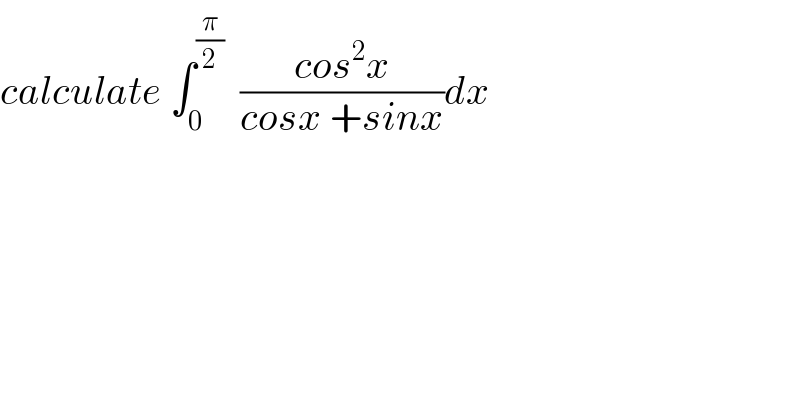Question Number 65691 by mathmax by abdo last updated on 02/Aug/19

Commented by mathmax by abdo last updated on 02/Aug/19

Answered by Tanmay chaudhury last updated on 02/Aug/19
![I=∫_0 ^(π/2) ((cos^2 x)/(cosx+sinx))dx I=∫_0 ^(π/2) ((cos^2 ((π/2)−x))/(cos((π/2)−x)+sin((π/2)−x)))dx =∫_0 ^(π/2) ((sin^2 x)/(sinx+cosx))dx 2I=∫_0 ^(π/2) (dx/(sinx+cosx)) 2I=∫_0 ^(π/2) (dx/( (√2) ((1/( (√2)))sinx+(1/( (√2)))cosx))) I=(1/(2(√2)))∫_0 ^(π/2) (dx/(sin((π/4)+x))) I=(1/(2(√2)))∫_0 ^(π/4) cosec((π/4)+x)dx I=(1/(2(√2)))∣lntan((((π/4)+x)/2))∣_0 ^(π/4) =(1/(2(√2)))[lntan((π/4))−lntan((π/8))] =((−1)/(2(√2)))lntan((π/8))](https://www.tinkutara.com/question/Q65718.png)
Commented by mathmax by abdo last updated on 02/Aug/19

Commented by Tanmay chaudhury last updated on 02/Aug/19

Commented by peter frank last updated on 02/Aug/19

